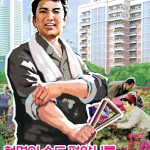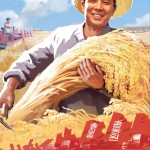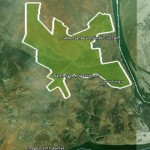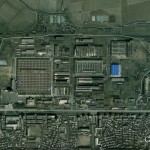According to the Daily NK:
The overbearing presence of ‘grain patrols’ is being keenly felt in North Korea these days. Formed at the municipal level from People’s Safety Ministry agents and Worker and Peasant Red Guards from factories and other enterprises, these groups of 20-30 individuals are busy manning checkpoints on main transit routes in agricultural areas to thoroughly restrict the movement of grains from cooperative farms and private plots.
To transit grain legally in North Korea at this time of year, a permit must be sought from the relevent Rural Management Committees. Those who do not hold the required documentation are meant to face punishment, although many simply bribe their way out of trouble. The patrols, which arrive in August, usually disband at the end of November.
A Hwanghae Province source recently told one Daily NK reporter, “They are blocking roads day and night inspecting people and their carts. They do not allow the carrying of any kind of foodstuff and confiscate without condition the goods of those caught.”
The source added, “Even people mobilized for the fall harvest are getting body searched; they are really annoyed.”
Another source from Pyongyang also described the scene, saying, “Currently the grain patrols are focusing on regulating the movement of corn, and are carefully watching for harvested corn being taken into people’s homes. So, some people get together to rent a car and bribe the patrol to be able to get around.”
The source also agreed that a substantial number of market traders are bribing guards and taking this year’s rice and corn from farms to sell.
Read the full story here:
Return of the Grain Patrol
Daily NK
Lee Seok Young
2011-11-15




